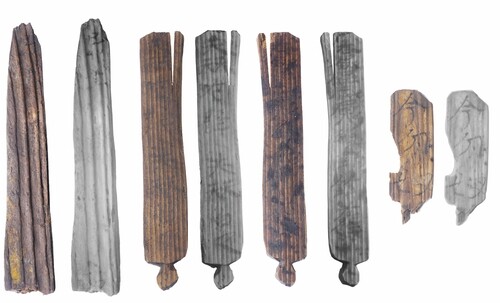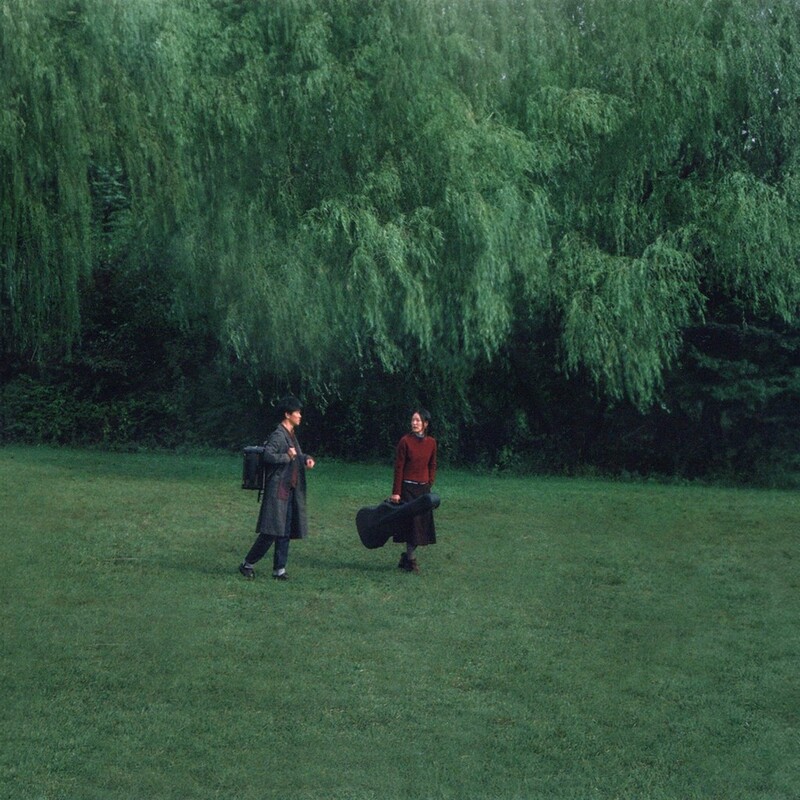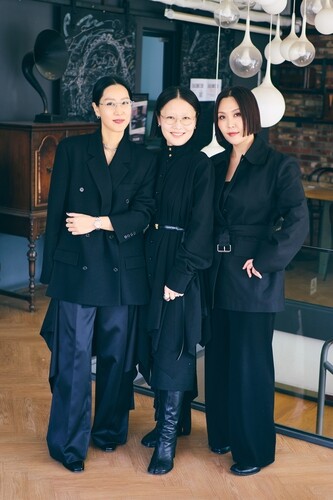 |
| ▲ Gyeonggi Province’s Yangju city and the Giho Cultural Heritage Research Institute said on the 20th that they confirmed three wooden tablets ("mokgan") and pottery believed to date back to the Baekje era during the 15th excavation conducted this year at Daemo Fortress in Yangju. (PHOTO NOT FOR SALE) (Yonhap) |
SEOUL,
Nov. 20 (Yonhap) --
If confirmed, they may be the oldest wooden tablets ever discovered in South Korea, drawing attention to their potential value for studying ancient Korean history, where written records are scarce.
The city of Yangju and the Gihu Cultural Heritage Research Institute said on Wednesday that three wooden tablets were newly discovered during the 15th excavation conducted since May at the fortress site.
Wooden tablets were used in ancient East Asia as recording media before the invention or widespread use of paper. They are regarded as “time capsules” offering glimpses into daily life at the time.
The newly found tablets were recovered from a water storage facility inside the fortress. Although the exact findspots differ slightly, pottery fragments commonly found at sites from the Baekje Kingdom’s Hanseong period (18 B.C.–A.D. 475) were unearthed from the same strata. Most of the pottery and other features nearby are believed to date to the 5th century. Researchers concluded that the tablets came from the Baekje cultural layer, where Baekje-era relics had accumulated.
 |
| ▲ A photo of the four wooden tablets unearthed from Daemo Fortress, , provided by Yangju city and the Giho Cultural Heritage Research Institute. (PHOTO NOT FOR SALE) (Yonhap) |
The most notable item in this season’s excavation is a tablet bearing a date. Experts from the Korean Wooden Tablet Society deciphered characters on the wood and identified the phrase “gimyonyon,” meaning the Year of the Rabbit in the sexagenary cycle — the 16th year in the 60-year cycle.
Considering associated artifacts, the date is thought to refer to either A.D. 439 or 499. The society concluded that 439 is the more plausible interpretation, taking into account the dating of the pottery and Baekje’s relocation of its capital to Ungjin (present-day Gongju, South Chungcheong Province) in 475.
A wooden tablet discovered at Mongchontoseong in Seoul has long been the subject of debate. Combined with excavational context, scientific analysis and historical evidence, scholars have suggested that it must have been produced no later than 551. The Seoul Baekje Museum stated in 2022 that if the Mongchontoseong tablet was indeed made before 551, it could be the oldest wooden tablet from the entire Three Kingdoms period. However, the characters on that specimen could not be fully deciphered, even with expert consultation and infrared imaging.
If the newly discovered “gimyonyon” is confirmed as 439, the tablet would precede the Mongchontoseong find by roughly a century. Lee Jae-hwan, a history professor at Chung-Ang University who participated in deciphering the characters, also noted the likelihood of a 439 date, saying it may be the oldest wooden tablet in Korea with a verifiable year.
The other two tablets also hold significant research value. One bears more than 20 characters on both sides, including the character “si” (尸), meaning a corpse, accompanied by several other characters. The characters “cheon” (天) and “geum” (金) are also visible. Multiple oracle bones — used for divination — were unearthed nearby.
 |
| ▲ This photo provided by Gyeonggi Province’s Yangju city and the Giho Cultural Heritage Research Institute on Nov. 20, 2025, shows the three wooden tablets ("mokgan") and pottery believed to date back to the Baekje era during the 15th excavation conducted this year at Daemo Fortress in Yangju. (PHOTO NOT FOR SALE) (Yonhap) |
Based on expert assessments, the city said the tablet resembles amulets found in China and Japan and likely had a ritual or magical purpose, suggesting that ceremonial activities took place inside the fortress. Cases in which such “amulet” tablets are found alongside oracle bones are considered rare.
Experts are also focusing on a tablet bearing the characters “Geummulno” (今勿奴). The geographical section of the historical text “Samguk Sagi” records that Heukyang County was originally Goguryeo’s Geummulno County before being renamed under King Gyeongdeok (r. 742–765). Geummulno or Heukyang is believed to correspond to present-day Jincheon in North Chungcheong Province.
A society representative noted the significance of a place-name associated with Goguryeo appearing on a tablet found together with Baekje pottery, calling it a potentially groundbreaking discovery that could overturn established academic views.
Daemosanseong has yielded a series of wooden tablets in recent years. The mountaintop fortress covers about 58,000 square meters and is thought to have served as a strategic transportation and military point connecting the Imjin River and Han River basins. In a 2023 excavation, a tablet believed to be related to Taebong — the state founded by Gungye (?-918) — was found, marking the first confirmed wooden tablet linked to Taebong. Last year, tablets bearing the characters “Geumwain” (金瓦人) and “Towain” (土瓦人), as well as a tablet with numbers, also drew attention.
This year’s work focused on the lower interior area of the fortress, separate from previously excavated zones. The city and the institute plan to continue excavations next year. A briefing session will be held at the dig site on the afternoon of the 28th to present the latest findings and introduce the tablets.
 |
| ▲ This poster is provided by Gyeonggi Province’s Yangju city and the Giho Cultural Heritage Research Institute on Nov. 20, 2025. (PHOTO NOT FOR SALE) (Yonhap) |
(C) Yonhap News Agency. All Rights Reserved























